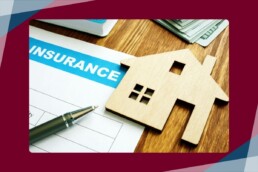5 Things to Know About Flood Insurance
Whether it’s a shallow pool of standing water in your basement or something much more serious, a flood can have a serious impact on your home. If you aren’t covered, you might end up spending hundreds to repair flood damage.
That’s money you could save by having the right flood insurance.
Flood insurance is the simplest, most effective way to safeguard your home—and your bank account—against flood-related issues. You may not be able to stop the flood itself, but flood insurance makes the aftermath much easier to deal with.
Choosing the right flood insurance for your home can be tricky, especially if it’s the first time you’ve purchased it. There are a few aspects of flood insurance you may not be aware of.
Read on to learn how to protect your home from floods by getting the perfect flood insurance.
1. It’s Required in Some Cases
Depending on where you live and how you’re purchasing your home, you may be required to get flood insurance. Many mortgage lenders in areas that flood frequently will want you to get flood insurance before giving you a loan.
It makes sense; the lending company is also invested in your home’s safety to an extent. Plus, they want to make sure you can make your payments, and dealing with costly flood damage could interfere with that.
How much flood insurance you need will vary. If you’re in a very high-risk zone, you may need quite a bit of coverage.
There are also several types of flood insurance; your lender may want you to have a specific type of coverage.
Make sure to talk about flood insurance with your lender so that everyone is on the same page.
2. You Can Research Flood History
If you’re worried about flooding at your prospective home, there’s a simple step you can take: research the history of flooding in the area. That should give you a good idea of how much flood risk you can expect.
Nearly every town and county in America has experienced a flood at one point or another, but some places flood much more readily than others.
Waterfront properties are obviously at high risk for flooding. If your home is near a beach, a lake, or a river, there’s a good chance you’re in a flood zone.
Very flat land is also at a higher risk of flooding, especially if there isn’t much vegetation in the area to absorb rainwater.
The easiest way to research the flood history of an area is to look up a flood map. The Federal Emergency Management Agency (better known as FEMA) maintains flood maps for most areas in the United States.
FEMA updates flood maps regularly using data from the community.
3. Direct and Indirect Coverage
When deciding on flood insurance, you need to understand the difference between direct flood damage and indirect damage. Direct damage will almost always be covered, but indirect damage is a bit less certain.
Direct damage is the most obvious kind of damage: damage to physical objects as a result of direct contact with floodwaters. This includes waterlogged items, damaged floors and walls, and so on.
Direct damages are easy to categorize because they have a price tag attached. If a flood ruins your computer, you can determine how much that computer costs as part of determining your total damages.
Indirect damage can be a bit more difficult to categorize.
Indirect damages might include a backed-up sewer. While damage from the backup is technically caused by the sewer, the sewer wouldn’t have backed up if not for the flood.
If you cause damage by taking emergency measures to escape the flood (such as breaking a window or door), that could also be indirect damage.
Whether or not indirect damages are covered depends on your policy and the circumstances around the damage.
4. Building and Contents Coverage
There are two main types of flood insurance: building policies and contents policies. Which policy you have determines the specifics of your coverage as each one focuses on different aspects of your home.
A building policy is exactly what it sounds like. It covers the actual building itself. That includes walls, floors, and the building’s foundation.
Built-in systems like HVAC units, your electrical and plumbing systems, cabinets, and even built-in appliances are also covered by a building policy.
Meanwhile, a contents policy will cover the actual items in your home. Your furniture, your electronics, your clothes—these fall under a contents policy.
If you have a contents policy, keep an inventory of the items in your home. That way, you’ll have a list to check when determining damages after a flood. This should help cut down on the stress of filing a claim.
5. What Isn’t Covered
It’s obviously important to know what you have covered, but knowing what isn’t covered by your policy is key too. For example, not all instances of moisture damage will count as flood damage.
One of the most common moisture problems that flood insurance won’t address is mold. Mold and mildew can pose a serious health risk, and both are common in the aftermath of a flood.
Thankfully, you can take steps to prevent mold breakouts, mitigating the issue as long as you’re proactive.
A lot of policies also limit their coverage of crawl spaces and basements. Your flood insurance policy may not cover your vehicle either.
You also need to be careful when filing an insurance claim after a flood. A flood might uncover pre-existing damage, which is not covered by flood insurance. Only file for damage that you’re certain a flood caused.
Protect Your Home With Flood Insurance
Flood insurance is a valuable asset, especially if you live in a high-risk flood zone. Understanding what you need, and what your policy covers, will protect your home and put your mind at ease each time it rains.
Are you interested in purchasing flood insurance? Contact us for a quote today!
Related Articles
What is Builder’s Risk Insurance?
Key Takeaways Builders Risk Insurance protects construction projects from financial loss caused by accidents, theft, weather events, and other risks during…
Homeowners Insurance in NJ: A Comprehensive Guide
Key Takeaways Homeowners insurance in NJ protects your home, personal property, and liability, making it essential for safeguarding your investment. Annual…


